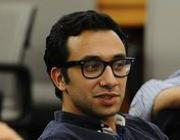"Behavioural and Neural mechanisms of naturalistic decision making "
In systems neuroscience, decision making has usually been studied by training animals to perform stereotyped behaviors in laboratory conditions usually in a two-alternative forced choice (2-AFC) setting. This has helped immensely to elucidate the neurobiological mechanisms of decision-making, but does not describe how such decisions are performed in a natural environment, and what are the ecological and evolutionary forces that shaped these processes. On the other hand, behavioral ecology examines the multiple ways by which decision making occur in the animal’s ecological niche and the evolutionary pressures that lead to decisions that function in natural environments. This approach generally does not examine the cognitive machinery that processes information, leaving open the question of how neural processing systems constrain decision-making under ecological conditions. An ideal behavior to bridge approaches from systems neuroscience and behavioral ecology is foraging. Foraging is a universal behavior performed by all animals from invertebrates such as C. Elegans and Drosophila to animals with large spatial ranges like birds, and mammals like rodents, monkeys, and humans. In addition to its universality across animal species, foraging engages multiple cognitive computations such as learning of food distributions across spatiotemporal scales, statistical inference of food availability, route planning and decision-making thus offering experimentalists the ability to study those computations as they happen simultaneously.
My long term research goals are :
- Bridging field studies on foraging to those performed in the laboratory through theoretical modeling.
- Designing quantitative behavioral experiments naturalistic experimental paradigms that are flexible enough to allow quantitative studies of single and multiple forager(s), exploring both their economical decision making processes and movement dynamics under different carefully controlled environmental structures
- Delineate brain wide activity recruited during individual and social foraging
Please check my research page for more details on specific research projects.

